Navigating the Stages of Pregnancy: A Guide for Expecting Parents
Pregnancy is an amazing journey for any woman and her family. It typically lasts around 40 weeks and is divided into three stages called trimesters: the first trimester, second trimester and third trimester. Each phase of pregnancy brings new experiences and unique challenges, both physically and emotionally. During the first trimester, morning sickness, fatigue and tender breasts are common symptoms while hormone levels continue to rise. The second trimester often brings more energy as nausea decreases and baby grows in size. During this stage, the mother may start feeling her baby move. In the third trimester, it’s normal to experience shortness of breath due to the growing uterus putting pressure on the diaphragm and heart giving the baby less room to move around. As the due date approaches it’s important for mom to be educated on labor signs so she knows when to go to the hospital or call her health care provider. With proper care throughout all stages of pregnancy, women can look forward to a safe delivery of their bundle of joy! Please keep reading for details on the following topics:
How a baby is formed
Pregnancy symptoms by trimester

HOW A BABY IS FORMED
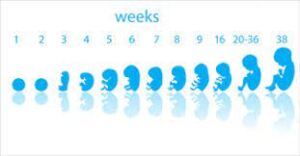
Having a baby is one of the most amazing and miraculous experiences that a couple can share. It all starts with the conception of a baby, a process that begins with the union of an egg and sperm to create an embryo. As the embryo grows over the coming weeks and months, the development of the baby’s organs, muscles, and other body parts will take place. Through proper nutrition and care, the baby will eventually be ready for its grand entrance into the world.
Within the first few weeks
An embryo develops
Formation of the brain and spinal cord occurs
Between week 4 and 6
The heart forms
Followed by the limbs
By week 8
The embryo becomes a fetus
Major organs begin to develop
The heart begins to beat
As the limbs lengthen, fingers and toes begin to form
The face and sex organs begin to form
The umbilical cord is clearly visible
By week 12
The first trimester ends
The baby can make a fist
The sex of the baby is apparent
The eye lids close until the 28th week
By week 16
The limbs continue to develop
The skin grows
Stool called meconium will begin to develop in the baby’s intestines
The baby is now able to suck with the mouth
By week 20
The woman will feel the baby move
Hairs (called lanugo) and a white sticky coating (called vernix) will cover the baby’s skin
Nails, eyebrows and eyelashes will form
The baby will be able to hear and swallow
By week 24
The body will begin to make blood
The tongue grows taste buds
Foot and fingerprints will be formed
Hair begins to grow on the head
The lungs begin to form but not yet able to function
The baby is able to sleep
The reproductive organs develop
By week 32
The bones are fully formed but soft
Movements increase
The eyes are able to open and close
The lungs can inflate and deflate
Hairs begin to fall off
By week 36
The vernix becomes thicker
The fetus increases in size
Movement decreases because of the limited amount of space
Between week 37 to 40
The organs can fully function
The fetus turns in position for birth
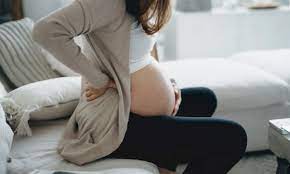
PREGNANCY SYMPTOMS BY TRIMESTER
Pregnancy is an incredible journey with so many changes occurring in a woman’s body throughout the nine months. This journey is divided into three trimesters, each of which brings its own unique set of physical, emotional and lifestyle changes. From the moment of conception to the moment of birth, here is an overview of what to expect during each trimester of pregnancy.
First trimester– the first 12 weeks of pregnancy
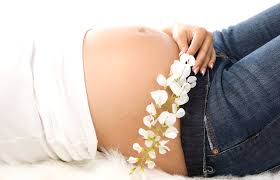
During the first trimester, the baby’s vital organs begin to develop, and the body begins to adjust to the pregnancy. The mother may experience morning sickness, fatigue, and changes in her breasts. This trimester can also be an exciting time for the parents as they begin to prepare for the baby’s arrival.
The woman usually experiences discomforts such as
Exhaustion/ tiredness
Morning sickness– nausea and vomiting
Hormonal changes
Urge to eat frequently
Tenderness to the breasts
Increase in urinary frequency
Lower back discomfort or pain
Second trimester– from week 13 to week 27
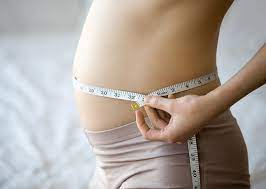
The second trimester is considered the most comfortable trimester of pregnancy. During this time the baby continues to grow and develop, while the mother may experience some relief from morning sickness. The mother’s belly will begin to show, and she may experience increased energy and appetite.
Body changes will be apparent
Decrease in symptoms of morning sickness
The size of the abdomen will increase
The woman will feel baby move
Pain to the muscles and ligaments may be felt
Stretch marks may appear on the body
The skin around the nipples and the face may darken
A dark line may appear on the abdomen
The ankles may appear swollen
Changes with the breasts
Pain to the hips or pelvic bone
Dark colored tint to the skin
Bleeding to the nose and gums
Pain or numbness to the joints of the hand (carpel tunnel syndrome)
Mild abdominal discomfort (Braxton Hicks contractions)
Third trimester– from week 28 to the birth
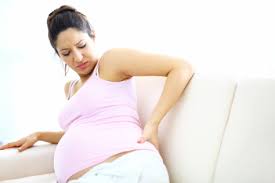
During the third trimester the baby continues to grow and develop, causing the mother’s body to become more uncomfortable. She may experience shortness of breath, backaches, and increased fatigue due to the baby’s size. This is also an exciting time for the parents as they prepare for the baby’s arrival and get ready for labor and delivery.
Continuation of symptoms from the second trimester
Frequent urge to urinate and shortness of breath due to the increase in the size of the uterus
Hemorrhoids
Leaking colostrum
Shifting of the baby into the lower part of the abdomen in preparation for labor
Braxton Hicks contractions
Heartburn difficulty sleeping
Difficulty breathing due to the size of the abdomen
Swelling to the feet and ankles
Difficulty obtaining a comfortable position to lay in
Frequent urination due to the pressure placed on the bladder by the uterus
Disclaimer: The information provided in this content is for general informational purposes only. It is not intended as medical or healthcare advice, diagnosis, or treatment. Always seek the advice of a qualified healthcare professional with any questions you may have regarding a medical condition or healthcare decisions.

